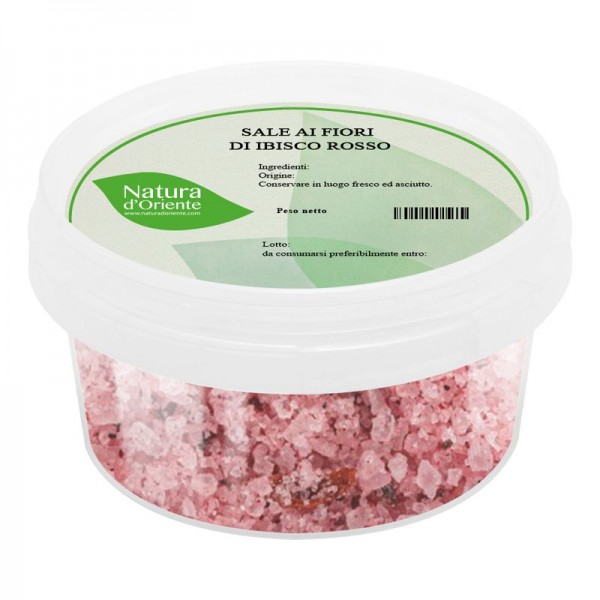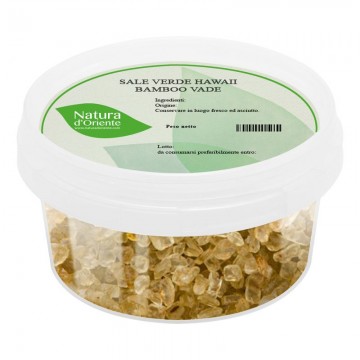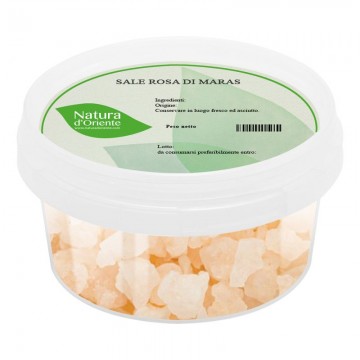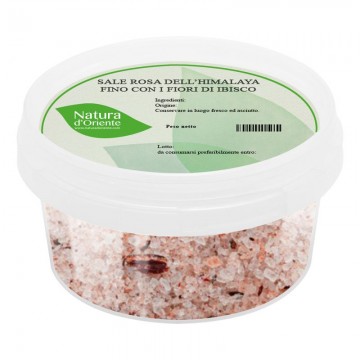This preparation has become a trendy ingredient for some years now.
Red hibiscus flower salt
The salt flakes flavored with dried hibiscus flowers give an exquisite salty and fruity-sugary flavor, much appreciated in some cooking recipes and cocktails. It is considered a blend with a delicate taste and charm for the eyes, thanks to the pink-purple tone acquired by the flower and the shiny crystals.
Red hibiscus flower salt: characteristics and benefits
The salt mixed with red hibiscus flowers makes for a special taste. It becomes a condiment that makes the difference in the kitchen, thanks to the inimitable color and a delicate floral flavor. Its scent goes perfectly with fish dishes, sushi and vegetables, thanks to the sweet and aromatic notes of the hibiscus flower. The flavor between fruity and floral, with a sour note of red fruit, is useful for experimenting with different recipes with this table salt.
The salt flavored with hibiscus is appreciated for its aesthetic versatility and flavor , considered excellent when exposed to humidity - releases the taste and rich violet hue.
Origins and History of cultivation
The sea salt is mixed with dried and ground hibiscus flowers to create a so-called finishing salt. These are high-quality salts, known for their texture that causes them to dissolve quickly when applied to finished dishes. Usually among the finishing salts there are flaked salt, fleur de sel and sea salt.
In the case of flaked salt, the light crystalline that resembles snowflakes. It is obtained by evaporating sea water in the sun and wind, until a salt brine is formed. A mixture that is slowly heated, to bring out the delicate salt crystals - pyramid-shaped, or fine and flat. The result is a light, flaky sea salt, which we know is collected in many areas of the world.
Combining the crystals with hibiscus you get a salt with purple hues. The hibiscus plant grows in all subtropics and tropics of the world, giving flowers with bright colors and scents. In particular, those of red hibiscus are used as aromas for many foods, from drinks to ice cream.
Nutritional values of Red Hibiscus Flower Salt
This salt contains sodium chloride, is rich in calcium and magnesium, as well as traces of other minerals.
How to use the salt:
We recommend using this flavored salt on dishes to give a delicate and fragrant nuance. Hibiscus salt can be sprinkled to delicately season salads, vegetable dishes, asparagus. Pleasant on spoon cheeses, it is suitable for salting ricotta and cream cheese, especially goat.
It is an appropriate salt to flavor grilled white meats, and in recipes with fish carpaccio, steamed or boiled fish fillets.
It creates refined notes on smoked salmon, egg dishes, rice with vegetables. Due to its sweet taste it is also versatile on fruit or dishes with avocado, pistachios, melon, pears. Excellent as a sweet-salty contrast for desserts, as in cupcake topping, and for flavoring chocolate. You can grind the salt crystals to add it to cold pasta, and to create delicious white sauces. For a more refined presentation, especially in cocktails, by the glass it is perfect.
Origins and History of cultivation
Caution is advised in the intake of sea salt in case of hypertension, pregnancy and breastfeeding. It is good to moderate the quantities in case of cardiovascular disorders, diseases related to the kidneys and blood vessels.









 No reward points for this product.
No reward points for this product.















